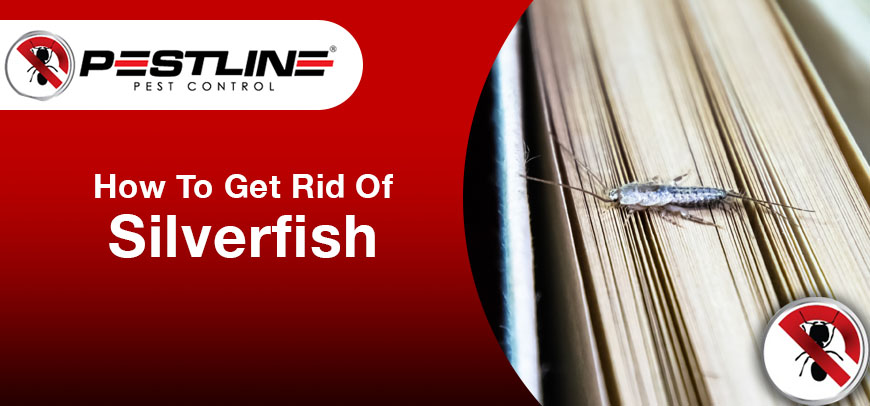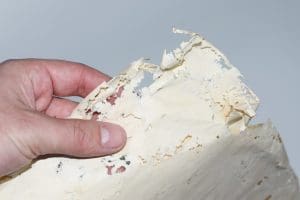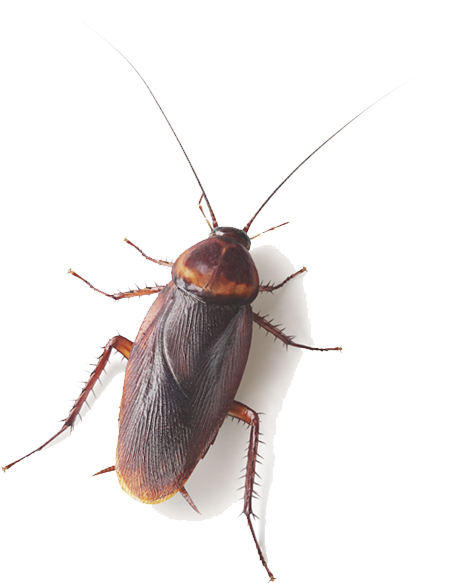How To Get Rid Of Silverfish
Of all the pests that infiltrate our homes, silverfish are guaranteed to be amongst the most creepy. These silvery, slithery little insects are identified by their shiny, scaly bodies and long antennae. They’re most typically observed in our bathroom and kitchen spaces, as they prefer areas with higher moisture or humidity. And chances are, if you’ve ever seen them, you’ve promptly Googled ‘how to get rid of silverfish’.
These insects aren’t exactly a welcome presence in your home for a few key reasons, some of which we’ll explore today. But if you are here because you’re looking for more information on silverfish control services or are looking into how to get rid of silverfish in your home, then we’ve got the answers you need.
So stick with us as we share our top tips for removing silverfish from Australian homes as well as outlining how you can ensure your home stays silverfish-free over the long term.
What are silverfish?
As we mentioned, silverfish are small, wingless insects that are silver or grey and possess long antennae. They look like more robust, wider versions of centipedes and millipedes, possessing thicker, elongated bodies with a tapering tail. Their silvery scales and fish-like movements are largely why these insects have been referred to as ‘silverfish’.
Although silverfish don’t bite, sting, or pose any direct health risks for humans via contact, they can still cause some damage in and around your home. This is because silverfish feed on starches and saccharides or carbohydrates. As a result, these insects can feed on books and clothing alongside food items – just like some types of moths. Simply put, you can detect if you have silverfish in your home based on the amount of damage that’s been done to items in your closet or on your bookcases.
What attracts silverfish to your home?
Like most household pests, silverfish are intensely attracted to moisture-rich environments. This is due to their waxy or oily bodies requiring areas with at least 75% humidity to thrive. As a result, you’re most likely to find silverfish living in bathroom, kitchen, and laundry spaces, as well as other spaces that may be high humidity throughout your home (i.e. cramped cupboards, closets, and wardrobes).
Naturally, you can curb silverfish populations in your home by decreasing the humidity levels throughout your home. But we’ll go more in-depth on this silverfish control tip below!
How To Get Rid Of Silverfish
Now that you know a little bit more about silverfish and the comforts that they seek, it’s time to share our top 10 favourite ways how to get rid of silverfish in Australian homes. Read on to unearth some silverfish control tips that may work wonders for your household.
The top 10 methods for getting rid of silverfish at home are:
- Keep all food items secured to prevent infestation
- Store seasonal clothes in airtight containers
- Sprinkle diatomaceous earth powder over silverfish
- Dust your home regularly
- Use natural repellants like essential oils
- Use sticky traps to catch silverfish
- Keep kitchen, bathroom, and laundry ventilated
- Clear up debris in your garden spaces
- Clear up clutter in the home too
- Seal up entry points into your home
1. Keep all food items secured to prevent infestation
As we mentioned, silverfish are fiends for anything sweet and starchy. So the first step you’ll want to take when controlling a silverfish infestation is to remove any food sources that could be fuelling your unwelcome houseguests. This means storing all food items in airtight containers and securely in pantry spaces rather than out in the open.
If you’ve found silverfish around things like fruit bowls and herb planters, these should also be addressed to help combat your silverfish infestation promptly. Consider moving fruit and vegetables into your fridge or cleaning your fruit bowl regularly to reduce the risks of insects like silverfish being attracted by the scents of overripe fruits.
2. Store seasonal clothes in airtight containers
Remember, however, that silverfish feed on other items around your home and not just on your groceries. Because of this, it’s also crucial that you take steps to keep your cupboards, closets, and wardrobe spaces free from clutter or any other potential sources of moisture.
The best way to do so is to organise your wardrobe by the seasons. We know that this is a tall ask for Melburnians, given we regularly experience all four seasons in one day, but rest assured, that storing your seasonal attire in airtight containers when they’re not in your daily rotation, can help drastically reduce your risks of experiencing damage caused by silverfish in your home.
3. Sprinkle diatomaceous earth powder over silverfish
Silverfish possess a waxy outer coating due to their body’s naturally higher oil content. This is also why these particular household pests require so much moisture to survive. But what happens if you remove your silverfish population’s access to moisture?
This question is precisely what sparked our next tip on how to get rid of silverfish: using diatomaceous earth powder. Also known as silica powder, diatomaceous earth powder is used specifically for dehydrating or absorbing moisture. That’s why you so often see those silica gel or bead sachets in shoeboxes and other product packaging.
Applying diatomaceous earth powder over silverfish will result in the powders absorbing the natural oils in these pests, culminating in them drying out and dying. Using this powder is particularly recommended when addressing silverfish infestations in laundry room and bathroom spaces rather than kitchen spaces, mainly to avoid risks of foodstuff being contaminated by the powder as well.
4. Dust your home regularly
As silverfish live off of starchy materials and saccharides, dusting your home regularly can greatly reduce the availability of these molecules in your living spaces. With fewer materials for them to eat, silverfish will be less likely to want to call your home their very own.
An added benefit of dusting your home regularly is that you’ll also be able to reduce other populations of pests, including cockroaches and mites. The less debris there is for insects to feast on, the lower your chances of experiencing an infestation in your home.
5. Use natural repellants like essential oils
Natural repellants can be a great alternative to using harsher chemical insecticides for many different pests, from silverfish to getting rid of spiders. Alongside being gentler on our lungs, essential oils like peppermint and tea tree can also help naturally repel other pests as well, including getting rid of rats and mice. This is because the strong scents of these essential oils disrupt silverfish pheromones, inhibiting silverfish colonies and egg-laying adults from settling comfortably in your home.
These oils are also simple enough to use. For instance, they can be applied directly to surfaces in your bathrooms and other spaces across your home, or they can be diluted and incorporated into cleaning mixtures. You may even opt to use oil diffusers in your bathroom and laundry spaces year-round. Not only will they keep plenty of household pests at bay, but they’ll also ensure that the air in your home stays fresh and aromatic.
6. Use sticky traps to catch silverfish
As silverfish are attracted to starchy food sources, another great way to deal with silverfish infestations is to use sticky traps to catch them and then dispose of them safely. You can buy sticky traps online that are designed to attract silverfish and then secure them to special adhesive surfaces.
You can even make your silverfish traps easily. All you need to do is wrap a glass jar in adhesive tape with a textured surface that allows the insects to easily scale the vessel. Once your jar is all wrapped up, simply position it with some food placed inside, just to bait silverfish into crawling up the textured jar and falling in. As the inside of the jar is smooth, your trapped silverfish won’t be able to escape, which allows you to pick up the jar and dispose of the silverfish outdoors with ease.
7. Keep kitchen, bathroom, and laundry ventilated
As we mentioned, silverfish are inherently drawn to moisture-rich areas for their survival. Because of this, you’re more likely to spot these household pests in your kitchen, bathroom, and even laundry spaces.
Thankfully, you can keep these environments less accommodating of silverfish by simply investing in ventilation for these spaces. Even just running fans during baths and showers to lower humidity levels can help to keep silverfish at bay year-round.
You may even opt to install a dehumidifier in your kitchen, bathroom, and laundry spaces to further support moisture control throughout your home. Whatever works best for you and your family.
8. Clear up debris in your garden spaces
Like other household pests, silverfish are always on the lookout for little nooks and crannies that they can find food and shelter in. This means that any green waste that’s left out in the open in your garden or yard spaces can rapidly become the perfect nesting ground for silverfish populations.
We strongly encourage all homeowners to clear their gardens of debris and plant matter whenever they can, just to reduce the real estate available to creepy crawlies like silverfish, spiders, and many other common household pests.
9. Clear up clutter in the home too
Just as you are encouraged to clean up your gardens regularly, so too should you keep your home uncluttered from season to season. Silverfish can easily seek refuge in the folds of magazines and even in between curtain folds. For this reason, you want to make sure that all bookshelves, coffee table stacks, and other reading materials are stored in a neat and orderly fashion, without any potential nooks and crannies for silverfish to camp out in.
And as we said earlier, dusting regularly can also work wonders here. It’s all about making your home clean and orderly so that opportunistic little critters like silverfish have no chance of getting comfortable.
10. Seal up entry points into your home
Finally, the best way to reduce your home’s silverfish population by far is to make sure they can’t even get under your roof. This means using sealants to patch up any cracks or crevices around your windows, doors, and even in your walls. In doing so, you can reduce the overall number of potential entry points that silverfish can use to access your home.
Another great tip here is to remove any branches or plant matter that makes direct contact with your home, as these can act as mini ‘green highways’ upon which insects can travel into your house.
Final Word
Did you know that silverfish can live for up to 8 years? They can lay hundreds if not thousands of eggs throughout their lifetime too, opting to lay their eggs in dark corners of your home.
This means that your silverfish infestation can take longer to address than you may think. And as silverfish are mostly nocturnal, it can be tricky to know when you have eradicated your infestation.
If you want to boost your chances of getting rid of silverfish promptly and entirely, then your best option for silverfish control is to call expert domestic pest control services. Thankfully, here at Pestline, we offer effective silverfish control services alongside other tailored services for a wide range of household pests.
Contact our team at Pestline to learn more about our pest management services today.
Have another pesky pest problem? Read our other guides on how to get rid of common pests properly:




